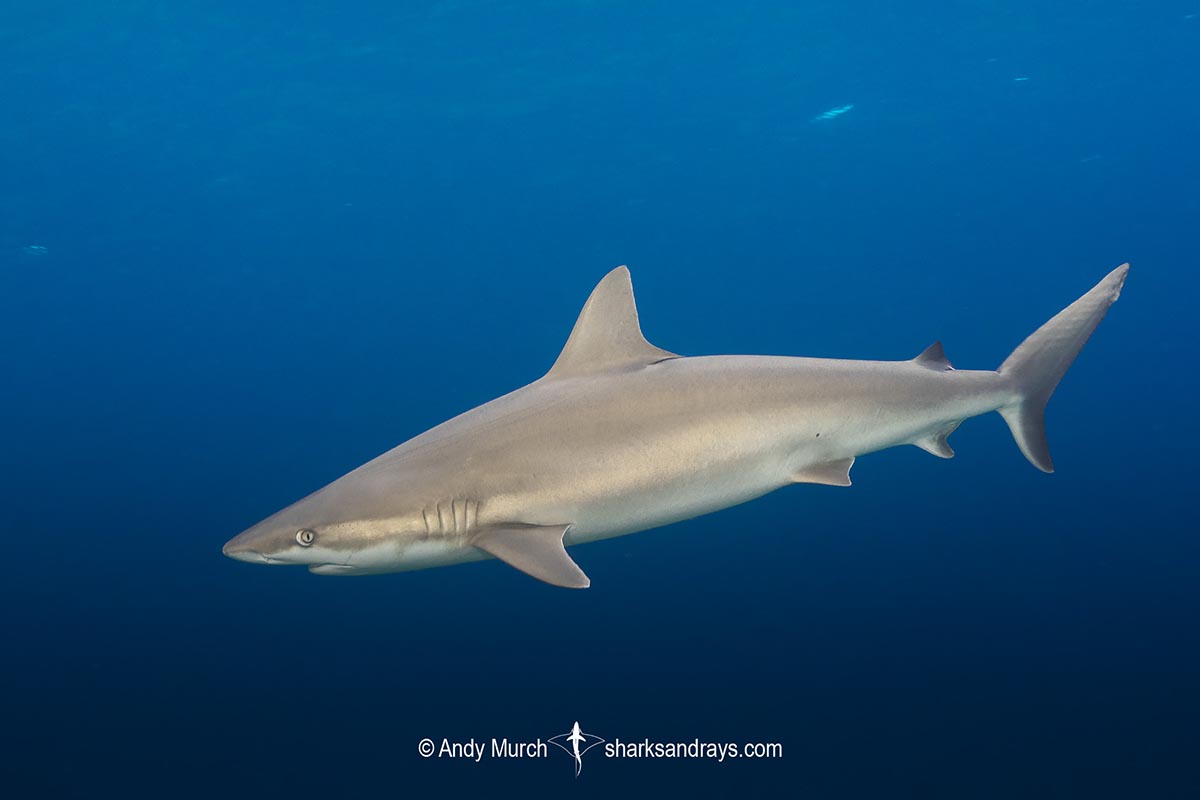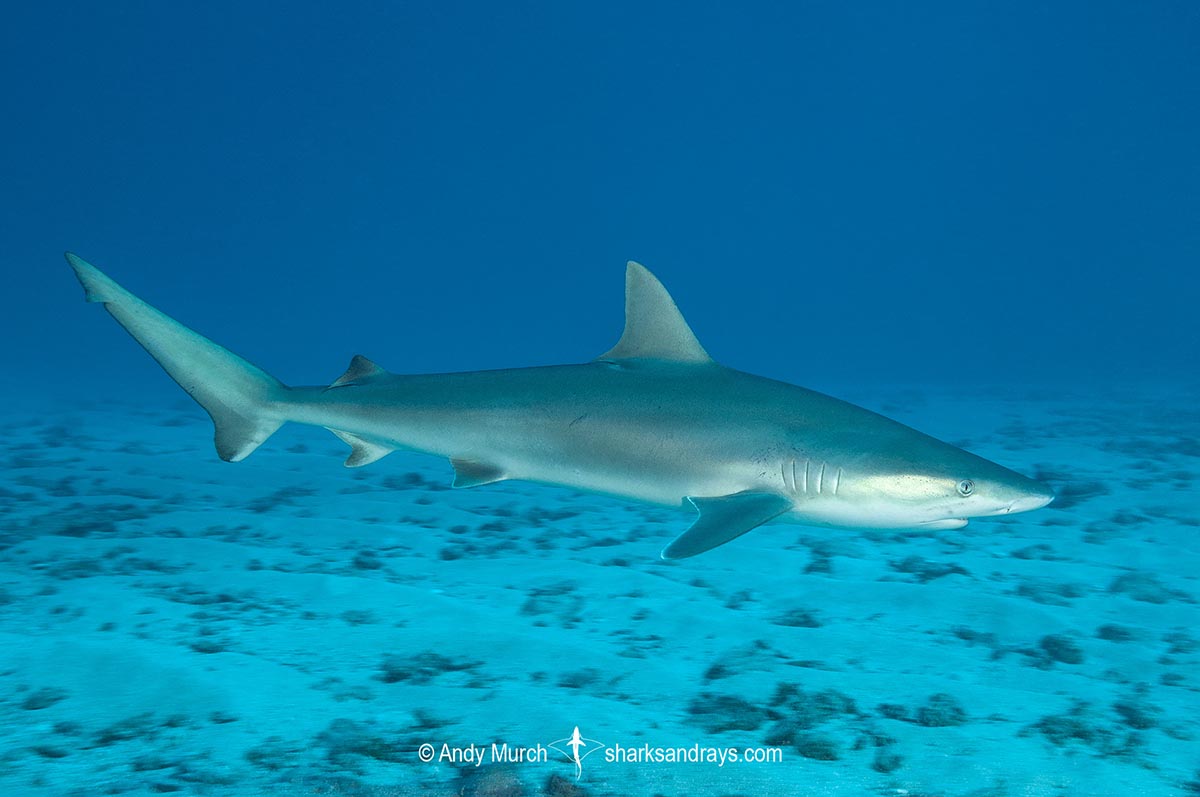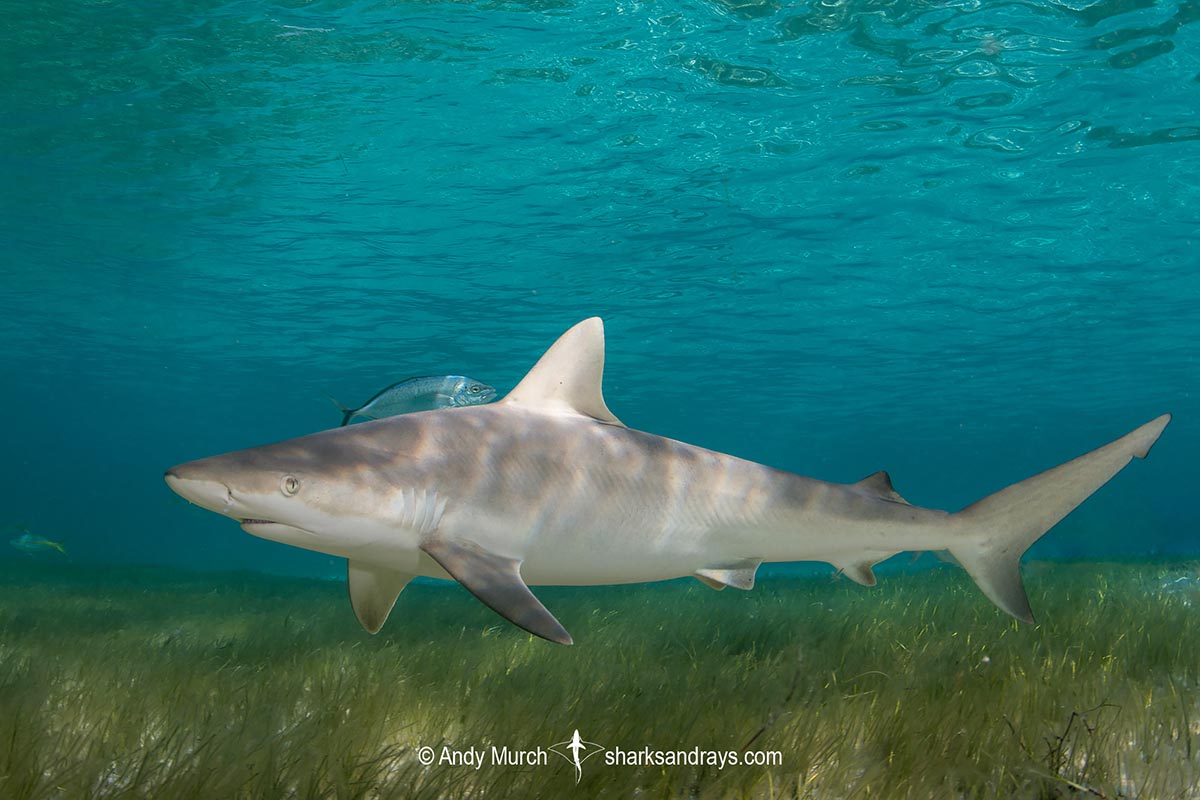Common name
Blacknose Shark.
Binomial
Carcharhinus acronotus.
Synonyms
Prionodon cucuri, Prionodon curcuri, Squalus acronotus
Identification
Small but stocky. Black/dark spot on tip of snout; distinct in young animals but often an indistinct smudge or absent in large adults. Pectoral fins relatively small. First dorsal origin level with free rear tip of pectoral fin. Second dorsal origin level with anal fin origin. No interdorsal ridge. Dorsal coloration pale yellowish-grey or light olive-grey. Body looks more bronzy in bright sunlight. Second dorsal, anal fin, and lower caudal lobe often dusky. Ventral surface white or cream coloured.
Size
Maximum length 141cm (Jose Castro). Size at maturity approx 100cm. Size at birth 31-50cm.

Conservation Status
ENDANGERED
Blacknose sharks are targeted by commercial shark fisheries throughout their range, including a large scale fishery in the US. They are also a major bycatch component in the US shrimp trawl fishery in the Gulf of Mexico and along the Caribbean coast of South America.
In the USA and Mexico, blacknose shark populations are declining by 2.8% per year. In the last three generation lengths, the population has been reduced by 30-49%. In South America, blacknose sharks have declined by 50–79%.
The Atlantic Highly Migratory Species Federal Management Plan (self managed by the US fisheries) implemented quotes and seasonal closures that have done little to stop the decline. Further south, management plans, seasonal bans, and MPAs exist but they are poorly enforced.

Habitat
A warm water species inhabiting coral reefs and sand flats/scrub.
0-64m. Often cited as occurring between 18-64m, but in the Bahamas I have consistently encountered blacknose sharks in shallow water (surface to 10m) where they are abundant.
Distribution
The blacknose shark is a tropical coastal species from the western Atlantic, Gulf of Mexico, and Caribbean Sea. It has been recorded from Virginia to Southern Brazil but rarely strays north of Wreck Island in North Carolina.
Reproduction
A viviparous species with yolk-sac placenta. 1-8 pups per litter.
In South Carolina, mating takes place in early to mid June (Driggers 2002). Gestation in S. Carolina is 10-11 months. 9-10 months in the Gulf of Mexico (Sulikowski et al. 2007).
Diet
Diet consists mainly of small bony fishes.
Behavior
Blacknose sharks undergo seasonal migrations related to water temperature. They are know to perform agonistic displays (fins down, back hunched) when threatened.
Reaction to divers
Shy around scuba divers but surprisingly bold in baited situations.
Diving logistics
Near South Bimini Island in The Bahamas, blacknose sharks are often encountered during Caribbean reef shark feeds at Triangle Rocks and Southern stingray feeds at Gun Cay. The depth at both sites is less than 6m. These dives are only offered by land-based operators because most liveaboards are too large to approach those dive sites.
Andros Island is reputedly another good place in The Bahamas to find blacknose sharks; moving in and out of the mangroves with the tide. However, I did not encounter any when I was there.
Further south in the Caribbean in Sint Maarten, the reef shark feed organised by Dive Safaris (local operator) used to attract a handful of blacknose sharks but they became less frequent over time. It is unclear if they were fished out or if competition with the attending Caribbean Reef Sharks became too great.
What’s new
View our full list of updates
Similar species
The blacknose shark’s small, stocky shape and black nose make misidentification in the field unlikely.




